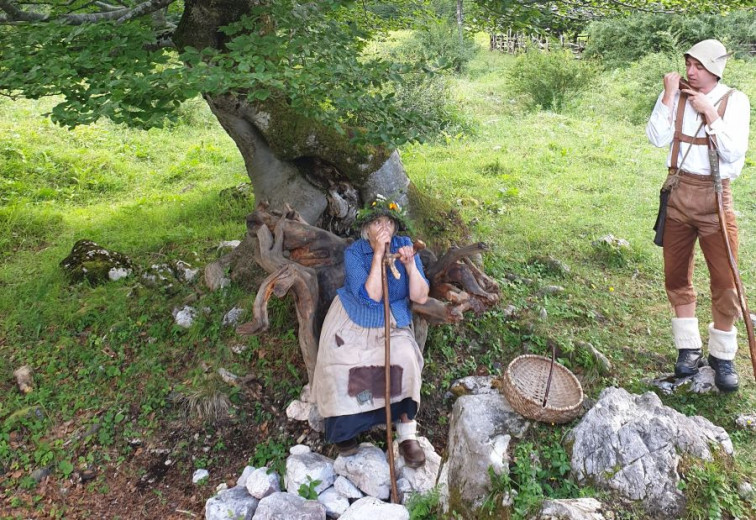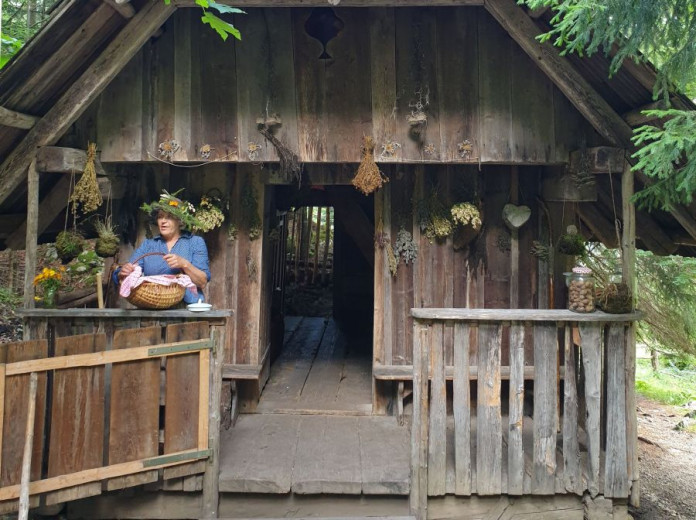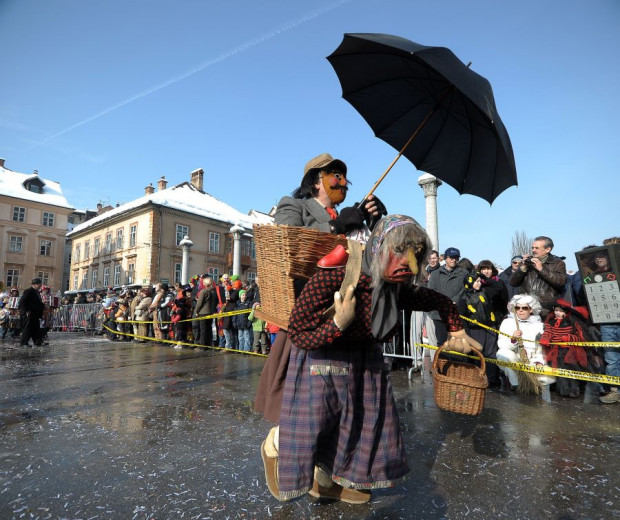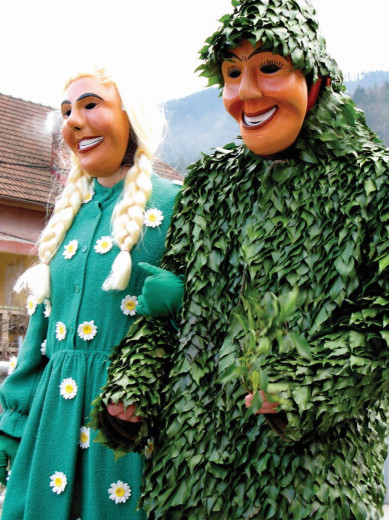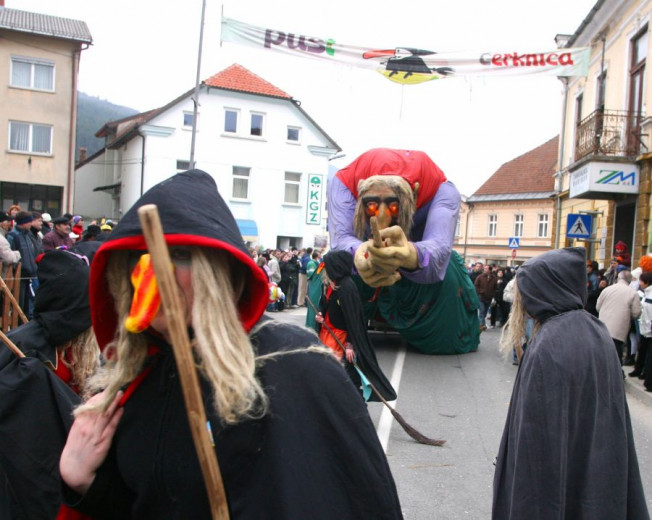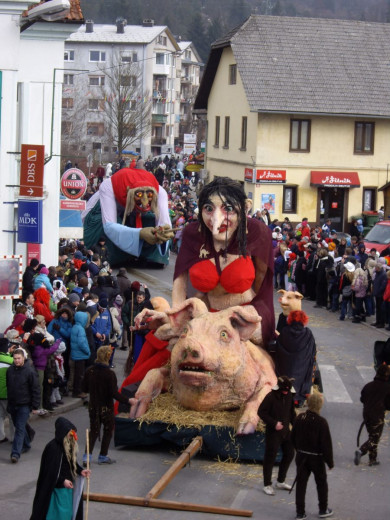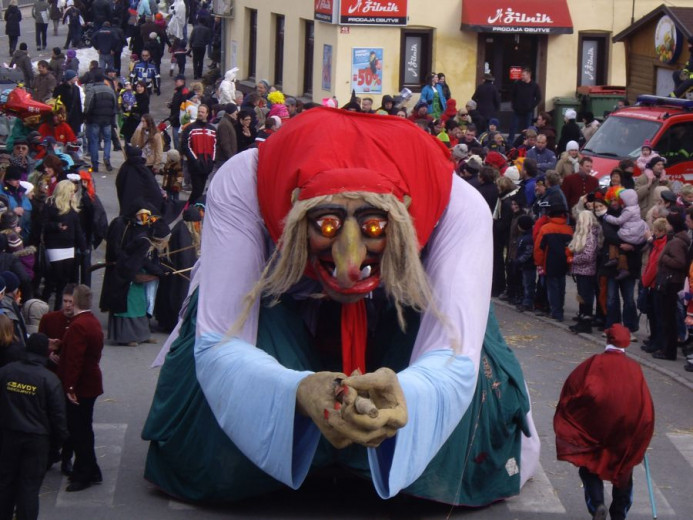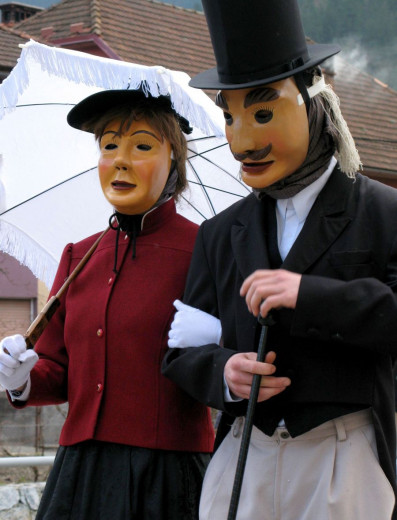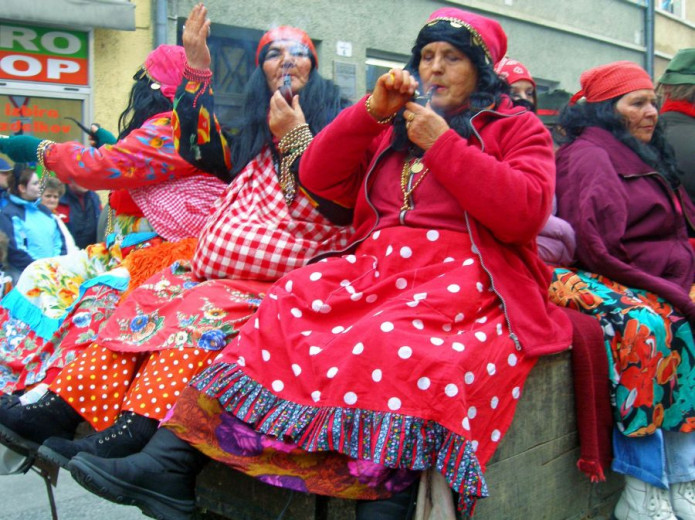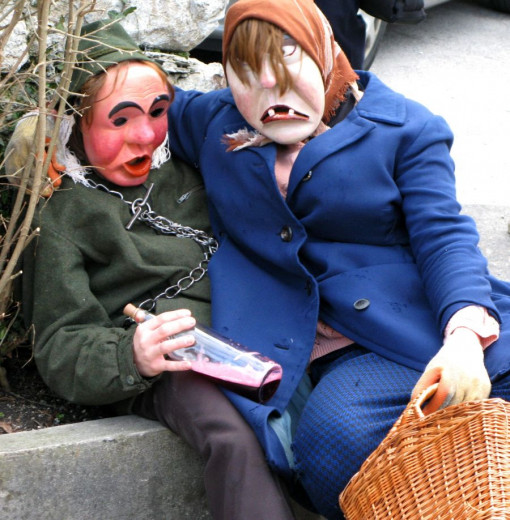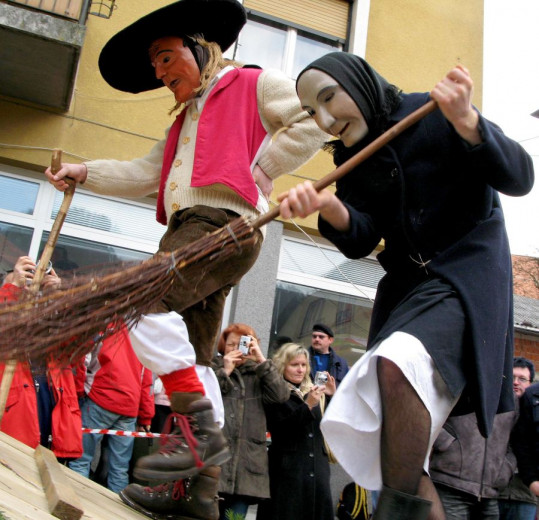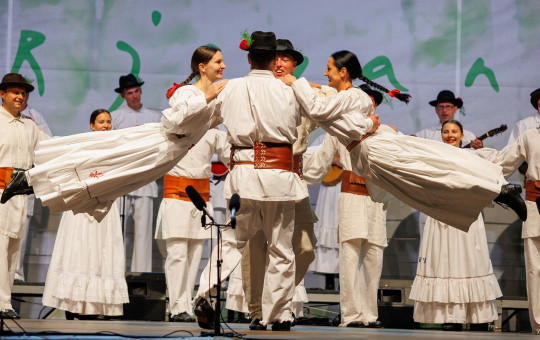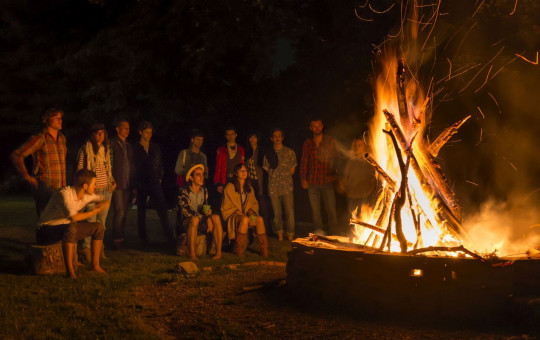Slovenian costumed figures are dominated by male characters, and the best known is definitely the kurent. In contrast, there are few women’s characters or costumed figures, and those that exist are usually portrayed by men.
Yet despite the predominantly male Carnival processions, Slovenia’s history of masked figures includes female characters, which are quite fascinating and appear in all regions of the country. The biggest of these is the Cerknica witch Uršula, while the oldest is probably Pehtra, who is depicted in the cult children’s film Srečno, Kekec! (Mountain of Fear), the story of the brave young boy Kekec, from 1963.
Wild Pehtra
She appeared where the Bavarian and Slavic lands meet in the Eastern Alps, somewhere on the border of Carantania in the 8th century. This is a female demon, a costumed figure especially typical of western Slovenia (the Soča Valley and Slovenian Carinthia, the upper Sava Valley, the Karavanke mountains to Tržič and in part of the Gorenjska region). The name Pehtra also appears in the versions Pehta or Pehtrababa, along with certain other forms. She is dressed in a sheet and is holding a club. It is usually young men who dress up as her, ringing large bells.
In the film Srečno, Kekec!, Pehta is some kind of wild woman who knows all about healing plants, and makes magic potions from them.
She also knows about the plants used to for a potion that can cure blindness. It is precisely this that Kekec seeks for his friend Mojca.
Granny carries grandpa
This Carnival figure originated in Haloze, and started appearing more frequently in the Slovenian regions after 1950.
Few people know that this ancient Carnival character portrays an old woman and old man who return as spirits from the next world and bring to the good your house, while taking away the bad. A more comical version of the story tells how Haloze women used to put their husbands in baskets since they were incapable of making their way home after working in the vineyards.
The costume figure is created so that the man steps into a basket without a bottom. Affixed to the front of the basket is the upper part of an old woman created as a mannequin (the head is usually made of stockings with a face and scarf attached, the torso being an old stuffed cardigan with a large bosom). The man then wears a long dress, and in this way it appears that granny carries grandpa. The man also smears soot on his face or puts a mask on, along with an old hat and some tattered clothes, resting his arms on the back of the basket.
The man carries an old umbrella, and the woman a basket. It was once the custom for them to walk from house to house, dancing and singing and speaking in a strange voice. They would receive food and drink as a gift, be teased by children, and the old man would shoo them away with his umbrella.
The old man and old woman
These two derive from a group of ancient figures, they are a couple and always walk together in processions. The old man is the head of a laufar family. He is dressed in old Cerkno peasant holiday clothes. He wears a wide-brimmed hat, and walks supported by a cane. He has the expression of a kindly old man who still has all his powers. He is the only laufar who can speak. On the morning of Carnival Shrove Tuesday, when he digs up the club with which he will end the Pust Carnival, he no longer cares about the old woman, but just watches out for Pust. The old woman is thus lonely, worried and passive. Just one tooth projects from her mouth. She carries a birch broom, sweeping at the head of the procession in front of Pust, in order to sweep away winter and all the transgressions it represents.
Crone’s Mill
Among the female characters or female-associated Pust scenes is the Crone’s Mill or Babji mlin. Most commonly this scene appears on painted beehive panels depicting a devil carrying an old and ugly woman into a mill, then brining out of it a young and beautiful woman.
In Carnival processions this feature first appeared around 1850 in the processions of Cologne, and some time later in the Slovenian lands.
To begin with it was typical mainly of the Dobro Polje costumed characters, although it also appeared elsewhere in Slovenia. In the years leading up to the First World War, this Carnival scene was set up on a sleigh or cart. On this was placed a container with two large openings. On top of it sat a costumed figure inviting old women among the crowd to come into the mill. If they declined, the other costumed crones in the processions went in, then emerging rejuvenated. On the side was a typical mill winch that was turned by one of the figures. The cart (or sleigh) was also pulled by the figures.
Marjetica holds the Ivy Man’s hand
She appears as an escort for the Ivy Man, Ta bršljanov. Both are part of the laufarija tradition from the Cerkno area. Ta bršljanov got his name from the Slovenian word for ivy, bršljan, from which his clothes are made. He has a happy and smiling face and represents the complete opposite to Pust, as well as spring and all the good that comes with it. He carries an ivy branch in his hands. Each year his costume is made from scratch, and it requires from 8,000 to 10,000 ivy leaves. He is accompanied by Marjetica, who joined the laufar characters in 1968. Her green outfit is strewn with daisies (the meaning of her name in Slovenian). Both figures represent spring.
Uršula the Witch
This figure from the Cerknica area appears in the writings of polymath Janez Vajkard Valvasor (1641-1693). He wrote: "At Slivnica there is a hole that makes a storm. At its peak witches, sorceresses and hags hold their dances and meetings. They appear as tiny flying lights. This entire region is very well stocked with witches. For this reason they are frequently set on fire and many burned, and occasionally more witches are brought there to the stake than were put on wood stacks throughout the land since time immemorial and reduced to ashes. For this reason they also carefully conceal themselves. This infestation has not yet been entirely stamped out, and beneath the huge mound of ash are the remnants of some sparks that could ignite this or that stack."
Uršula the Witch is now a kind of queen of the Shrovetide Carnival in Cerknica. She is the first large-scale figure in Slovenia. She was designed by painter Milan Rot, and first appeared in 1978. She measures 12 metres in length and is almost four metres high.
Men have never been of any particular interest to Uršula. And truth be told, men themselves have not exactly flocked around her, with her hunchback and hooked nose making her a not especially desirable witch. Uršula does however have a first-born child, Liza, who is much more alluring to men, who also interest her. In contrast to Uršula on her broom, Liza rides a pig.
May tomorrow bring another smile to your face
In addition to the figures described above, Carnival processions also include the Drunk Woman, the Gypsy Woman and a few other elegant ladies. In Slovenia the Carnival is indeed a living thing.
Although some characters, including female ones, are constant features, the costumed figures are always being joined by new ones. In the Cerkno area there is Butale, home to the Butalci people, who are at odds with good sense, and each year some new Butalec or witch is born.
And in Štajerska there are some little kurents. Certainly there are Slovenian women of a certain age who would wish for a Crone’s Mill or some young Ivy Man. All of this is possible, but the most important thing is good cheer, doughnuts full of jam and crisp pastries. Here’s to the joyful characters and Carnivals! And let there be much laughter throughout the year. Even though we may be bewitched or not wish to understand everything, as is the custom among the Butalci.
Date: 10. February 2020
Time to read: 4 min

